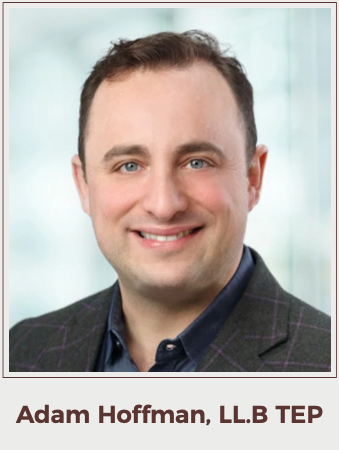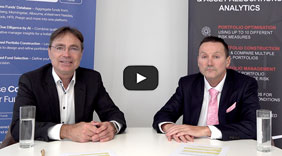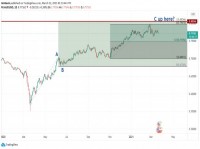|

Adam Hoffman is a family enterprise fiduciary and family office advisor. He uses prior experiences as a tax lawyer, co-founderand CFO of a renewable diesel startup, SFO President and wealth management firm President to assist entrepreneurial families in thriving for generations. His newsletter FO Perspectives is available at adamhoffman.net. In 2014, I went to my father-in-law with the greatest investment opportunity I figured I would ever see in my life. Yes, I used that kind of hyperbole discussing it with him. He could see my excitement no doubt. This was an opportunity to invest in me and take a big challenge on transitioning from my tax law career to co- founding a business. Sam wrote me a sizeable cheque the next week and implored me to understand the following three things:
The family bank’s role in effective family office design Where families want to financially support their family members’ pursuits, regardless of whether the pursuit is profit-seeking or not, the Family Bank is the best governance tool to do so. Of all governance tools I have worked with (IPS, Mission/Vision/Values, Distribution Policies, Family Constitutions, etc.), the Family Bank is the most important because it lies right at the heart of effective Family Office strategy. All Family Offices have Investment Policy Statements, but without similar rigor being applied to the governing of family pursuits, the family is essentially admitting they lack intentionality towards investment in their people, their human capital. A Family Office that has a poor or non-existent personal development strategy is thereby ignoring the biggest risk of all to Family Offices, that being the risk that weak future wealth stewards will be unable to effectively transition governance and control of the family’s resources. Family banks come in many forms and all serve to foster the family’s well-being and fulfillment My father-in-law saw an opportunity to invest in a shared value, in this case entrepreneurialism, and a fantastic growth opportunity for me personally, and knew the investment was valuable regardless of the financial return. Sam setup a casual form of the Family Bank that day, although if consulting to my father-in-law I would absolutely tell him to lend the funds, not gift them, and to place personal development conditions on the loan as a form of interest repayment (conditions like “improving teamwork dynamics”, “understanding private equity”, “valuation principles” and the like). It was a pretty incredible attempt in retrospect, without the guidance of the family governance industry. I grew as a wealth steward an immense amount from that startup. I may have grown that much if I had stayed a lawyer over the years and never made the transition, but I doubt I ever would have learned those same lessons as deeply or as quickly. I feel like Sam’s investment paid off. I’m proud that our Family Wealth increased. The family wealth equation I use the following Family Wealth Equation as the core perspective in my writings on my personal blog at AdamHoffman.net. The Equation is very helpful in helping family enterprises align family office design with their goals: FW = R (HC + RC) FW: Your Family Wealth (which is also a measure of the success of your family as you define it, and over time is therefore a measure of the quality of your family’s collective legacy) is equal to the sum of your human capitals and relational capital, multiplied by your resources. HC: Your human capitals include intellectual, spiritual and emotional elements. RC: Your relational capital is both your family culture and your role in the communities you care about. R: Your resources are principally your financial capital and your most valuable resource, time. The equation reveals the amplification, the multiplicative power of your privileged resources, in building more successful families (as the family defines it). Yet, the equation also reveals that your resources can only be valuable when properly harnessed. If, over time, the quality of your people and their relationships degrade, no amount of financial resources will save that family legacy. It is the ultimate privilege of our fortunate lives that we get to rise up Maslow’s hierarchy of needs. That we have the basic human needs and safety to focus on belonging and esteem. Yet with great privilege comes great responsibility; these resources need tending and can have quite the destructive effect on human fulfillment and family culture when left unharnessed. Summary and suggestions The Family Bank is a governance tool that introduces policies when deploying financial capital into family pursuits. It is a tool that takes ad hoc spending and introduces discipline. With these policies in place, a “no” from the family is hopefully less emotion-ridden and more considered. It is harder for the family member being denied the capital that it is because “you don’t love me.” Although consultants can greatly assist in developing robust Family Bank policies, I have found that effective Family Bank’s can be developed in as little as one hour. These are the key questions:
Here is an example of a Family Bank process I have used in the past: Gate 1: The family member presents a written, short and high-level view of the opportunity, how this opportunity is intended to develop the specific growth goals for the beneficiary, and how those growth goals align with family goals. A review committee is named, which could include non-family members. Gate 2: The review committee is introduced to the stakeholders of the pursuit. The management team submits a business plan (for a financial pursuit). For non-financial pursuits, the “business plan” varies. Gate 3: This is the due diligence gate, where the beneficiary’s projections for the use of capital are stress-tested. This can get granular and is family culture specific. Gate 4: Co-approved summary of Gates 1-3. The review committee members and the borrower agree upon an investment summary to be delivered to the family counsel / family governance structure for review. Gate 5: Family counsel review/proposal refinement. Answer follow-up questions to the summary. The counsel is entitled to refine the loan or gift request at this stage (including seeking structure and tax advice). Gate 6: Capital decision. A denied loan or gift results in no presentation to the greater family. | ||||
|
Horizons: Family Office & Investor Magazine
Adam Hoffman: A New Formula for Family Wealth |
|





 RSS
RSS








